
What are the top schools with degrees in scientific, medical & biomedical illustration?
| School | State | Degree Type |
|---|---|---|
| Augusta University | Georgia | MASTER'S - MS in Illustration |
| Johns Hopkins University | Maryland | MASTER'S - MA in Medical and Biological Illustration (MBI) |
| Rochester Institute of Technology | New York | MASTER'S - MFA in Medical Illustration |
| University of Illinois at Chicago | Illinois | MASTER'S - MS in Biomedical Visualization (BVIS) Program |
| Arcadia University | Pennsylvania | BACHELOR'S - BA in Scientific Illustration |
| Buena Vista University | Iowa | BACHELOR'S - BFA in Scientific Illustration |
| Cleveland Institute of Art | Ohio | BACHELOR'S - BFA Biomedical Art (Medical Illustration) |
| Ferris State University | Michigan | BACHELOR'S - BFA in Medical Illustration |
| Iowa State University | Iowa | BACHELOR'S - BA in Biological/Pre-Medical Illustration (BA BPMI) |
| Rochester Institute of Technology | New York | BACHELOR'S - BFA in Medical Illustration |
| Rowan University | New Jersey | BACHELOR'S - BFA in Biomedical Art and Visualization |
| University of Georgia | Georgia | BACHELOR'S - BFA in Scientific Illustration |
| Virginia Commonwealth University | Virginia | OTHER - BFA in Communications with a Concentration in Scientific and Preparatory Medical Illustration |
| Louisiana Tech University | Louisiana | OTHER - BS in Biology offers a Pre-Medical Illustration Concentration |
| Minnesota State University | Minnesota | OTHER - Certificate in Scientific Illustration |
| Olivet College | Michigan | OTHER - BA in Visual Arts with a Biological Illustration Concentration |
| Rhode Island School of Design | Rhode Island | OTHER - Certificate in Natural Science Illustration |
| Savannah College of Art and Design | Georgia | OTHER - Scientific Illustration Minor |
Schools with Master’s Degrees in Scientific, Medical & Biomedical Illustration:

Founded in 1828, Augusta University serves around 8,800 students enrolled in more than 140 academic programs through ten colleges and schools in locations throughout Augusta and at satellite campuses in Athens, Albany, Rome and Savannah. The College of Allied Health Sciences and the Graduate School offer an MS in Medical Illustration.
Established in 1948, the Medical Illustration Graduate Program is the oldest and longest accredited graduate program in medical illustration. It is also one of four programs in North America accredited by the Committee on Accreditation of Allied Health Education Programs.
The 21-month curriculum for the program “emphasizes anatomical and surgical illustration for print and electronic publication, as well as for projection and broadcast distribution,” says the school. During the first year, students learn a variety of traditional illustration techniques as well as “computer technologies and digital techniques used to prepare both vector and raster images for print, projection, animation, and multimedia.”
Students will also study communication theory and take graduate-level science courses such as Gross Anatomy and Cell Biology, with the medical students. They learn the fundamentals of storytelling for science in mediums such as animation, illustration, and interactive media, and spend time each week in the operating room observing and sketching.
In addition to formal classes, seminars and lectures, “students learn by hands-on performance, by participating in project critiques, and by cultivating creative thinking in peer-to-peer interactions.” To better prepare students “to be productive in the rapidly evolving world of communications,” class assignments are designed to give them both theoretical knowledge and practical experience.
Graduates of the MS in Medical Illustration Program have near 100% employment placement rate after graduation. Many graduates also run their own companies and in recently, 17 alumni (or their companies) won awards from the 70th Annual Conference Association of Medical Illustrators.

Founded in 1876, Johns Hopkins University serves more than 24,000 undergraduate and graduate students enrolled in more than 260 programs in the arts and music, the humanities, the social and natural sciences, engineering, international studies, education, business, and the health professions. The school houses nine academic divisions plus the Applied Physics Laboratory. The MA in Medical and Biological Illustration (MA MBI) is offered through the Department of Art as Applied to Medicine—one of the departments in the School of Medicine.
Founded in 1911, the Hopkins Department of Art as Applied to Medicine is the oldest medical illustration program in the country. Approved in 1959, the two-year MA program “provides broad interdisciplinary education and training in medical illustration” says the school “meeting both the scholarship requirements of the university and the visual communication needs of today’s health science professionals.” During the first year, students will take courses in advanced sciences, illustration, animation, 3D modeling, graphic design, instructional design, medical photography and business practices.
During the second year, topics will cover surgical illustration, scientific writing, website development, and interactive media, independent research and thesis, presentations to scientific audiences, and ophthalmological illustration.
Students in the program will access to all the facilities of the “world-renowned” Johns Hopkins Medical Institutions as well as student studios with fully equipped, individually partitioned work areas, ample communal workspace, and a state-of-the-art computer lab with multiple workstations, platforms, peripherals, and resources.
The program culminates in the Portfolio course, which is designed to help students transition to professional life. Graduates of the Johns Hopkins Medical and Biological Illustration program “have a strong history of high employment rates with some students receiving job offers prior to graduation.” Graduates from 2014-2018 had an employment rate of 95% within the first six months.

Rochester Institute of Technology (RIT) traces its roots back to 1885. The school serves nearly 19,000 students at its main campus and international campuses in China, Croatia, Dubai, and Kosovo. Hundreds of programs are offered at the graduate, undergraduate and professional levels in nine colleges. The College of Health Sciences and Technology offers an MFA in Medical Illustration—one of only five such programs in North America and the only program in the Northeastern U.S.
The two-year program is “one of a very few undergraduate medical illustration majors offered in the country that prepare students to join the medical team as an allied health professional,” says the school. Program highlights include “extensive training” in 2D and 3D digital graphics, interactive media, and animation, projects designed for use in broadcast media, print, projection, and distribution via the web and mobile devices, and first-hand experience in real-life medical situations through RIT’s collaboration with area hospitals.
Students will work with medical researchers and observe live surgery in the operating room. An optional co-op or internship are also available during the summer term. “The program culminates with the production of a thesis project, which requires extensive background research and an original body of artwork on a complex medical topic.”
Graduates of the program go on to land positions such as Medical Illustrator, Freelance Medical Illustrator, 2D Medical Animator, 3D Computer Modeler/Animator, Medical Interactive/Interface Designer, Medical Web Designer, Medical Legal Illustrator/Litigation Support Specialist, Medical Book/Texts Illustrator, Medical Editorial Illustrator, Medical Model Designer, Prosthesis Designer/Anaplastologist, Forensics Illustrator, Ophthalmologic Illustrator, and Medical Illustration Educator.
Alumni are often hired by RIT hiring partners such as Advanced Practice Strategies, Current Medicine Group/Springer Health-care Communications, Dartmouth Publishing, New England Journal of Medicine, Precision Graphics, Inc., Science Magazine, Smithsonian Institute, Springer Healthcare Communications, and Visible Body/Argosy Medical Publishing.
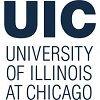
University of Illinois at Chicago (UIC) formed in 1982 by the consolidation of two University of Illinois campuses—the Medical Center campus, which dates back to the 19th century and the comprehensive Chicago Circle campus which replaced, in 1965, the two-year undergraduate Navy Pier campus that opened in 1946 to educate returning veterans. Today, as the largest university in the Chicago area, the school serves 33,390 students enrolled in more than 200 programs in 15 colleges and schools.
The College of Applied Health Sciences houses the MS in Biomedical Visualization (MS BVIS) Program, which is the largest and second oldest of four accredited programs of its kind in North America. The MS BVIS Program “integrates medicine, life science, communication technology, visual learning, education science, research and artistic training,” says the school. Students in the program will work with Medicine, Bioengineering and other departments at UIC and gain real world, hands-on experience through UIC’s “close relationships” with other Chicago medical universities, professional medical societies, medical advertising agencies, pharmaceutical companies, museums, animation studios and software companies.
Students in the program will take courses such as Advanced Craniofacial Anatomy, Anatomical Visualization, Animation, Biomedical Visualization Techniques, Business Practices, Graphic Design, Human Neuroanatomy, Illustration Techniques, Interactive 3D, Ion Channels Structure, Function Pharmacology and Pathology, Medical Legal Visualization, Modeling, Surgical Illustration, 3D Space, Video Game Design and Development, Virtual Reality and Stereography in BVIS, Visual Learning & Visual Thinking, and Web Development.
Graduates of the program go on to become “highly-skilled science visualization specialists” in areas such as animation, gaming, haptics, interactive media, medical illustration, and virtual and augmented reality, “working on the frontiers of discovery.”
Schools with Bachelor’s Degrees in Scientific, Medical & Biomedical Illustration or that offer Medical Illustration Concentrations, Certificates, or Minors:
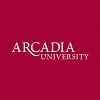
Founded in 1853, Arcadia University serves 3,700 students enrolled in dozens of degree programs across five colleges and schools. The College of Arts and Sciences houses the Illustration Program, which offers a BA in Scientific Illustration with an Optional Emphasis in Premedical Illustration. A Minor in Scientific Illustration is also available.
The BA in Scientific Illustration with an Optional Emphasis in Premedical Illustration includes courses such as Advanced Drawing, Comparative Anatomy and Physiology, Digital Fabrication, Graphic Design (Typography), Human Genetics and Development, Illustration I, Illustration II (Children’s Book Illustration), and Scientific Illustration. Students in the program will have the opportunity to receive supervised training in illustration, design, computer imaging, systematics and/or collections management at a studio or research institution in the Philadelphia area.
Past internship sites include the Academy of Natural Sciences, Jefferson Hospital, and the Philadelphia Zoo.

Buena Vista University (BVU) was founded in 1891 as Buena Vista College. The school became Buena Vista University in 1995 and now serves nearly 2,000 students enrolled in more than 45 academic programs and majors in 16 locations across the State of Iowa. Options for aspiring science and medical illustrators include a BFA in Scientific Illustration.
Program highlights include access to painting and printmaking spaces and equipment, gallery spaces with customizable lighting and digital projection capabilities, a Mac Lab, and the opportunity to complete an internship. Past internships have included Des Moines Art Center, the Iowa Arts Council, and Planet Hollywood,
Graduates of the program will have the skills need to produce high quality drawings and illustrations for academic journals, magazines, museums, magazines, scientific websites, textbooks, and other scientific sources. In addition to pursuing careers such as Arts Administrator, Illustrator, Master Printer, and Professor, graduates often go on to earn a graduate degree. BVU graduates have been accepted to the Art Institute of Chicago, Minnesota College of Art & Design, University of South Carolina, Wichita State University, and many others.
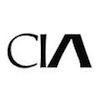
Founded in 1882, Cleveland Institute of Art (CIA) serves 645 students from 32 states and nine countries around the world. The school, which offers 15 majors in the fine arts, design, craft, and interactive media, offers a BFA degree in Life Sciences Illustration—one of only a few BFA degrees of its kind in the United States.
The program “combines applied art, science, and technology to create visual education materials on scientific and medical topics.” The curriculum “incorporates leading-edge digital media techniques, interactivity, and animation.” Students in the program learn how to “blend artistic talent with knowledge of natural science, a biomedical intellect, and strong visual communication skills.” Course highlights include Computer Imaging and Animation, Editorial Illustration and Instructional Design and Multimedia.
Students and graduates of the program benefit from CIA’s professional partnerships with Case Western Reserve University, University Hospitals Case Medical Center, the Cleveland Clinic, the Cleveland Museum of Natural History and the Cleveland Botanical Garden. Students have opportunities to learn through experience by working on real-world projects with these partners—all before graduation.
Graduates have gone on to land positions such as Art Director, Biomedical Illustrator, Illustrator, 3D Animation Artist/Designer, and many others.

Founded in 1928, Kendall College of Art and Design (KCAD) is a college within Ferris State University. The school serves more than 1,000 students enrolled in around 24 BFA, BS, MA, MFA, and Certificate programs. Among these programs is a three-year BFA in Medical Illustration that consists of classes from KCAD, Ferris State University, Grand Rapids Community College, and Michigan State University.
Students in the program will take a combination of Art, Communication, and Science coursework. Students will study Anatomy, Biology, and Medical Terminology, illustration techniques such as include All-Digital Illustrations, 2D Animations, Traditional/Digital Hybrids, Traditional Drawing Methods, and 3D (Digital) Modeling, and Visual Communications.
Graduates of the program are prepared to seek intermediate to advanced positions in the field or for further graduate or professional level study.

Iowa State University began as Iowa Agricultural College and Model on March 22, 1858. The school serves approximately 33,391 students enrolled in hundreds of academic programs in 10 colleges and schools. The College of Liberal Arts and Sciences (LAS) is Iowa State University's largest college and includes 22 academic departments and one professional school. LAS offers majors in the humanities, social sciences, physical sciences, biological sciences and mathematical sciences.
Program options for aspiring medical illustrators include a BA in Biological/Pre-Medical Illustration (BA BPMI) and a Minor Biological Illustration. The Minor in Biological Illustration requires a minimum of 17 credits, including eight credits in biological science courses and nine credits in art and design courses.
The interdepartmental BPMI program is “designed for students who want to combine their interests and aptitudes in science and art,” says the school. Course highlights for the program include Application of Scientific Illustration Techniques, Comparative Chordate Anatomy, Computer Modeling, Rendering and Virtual Photography, Dendrology, Design Representation, Plant Anatomy, Plant Systematics, Scientific Illustration Principles and Techniques, and Watercolor Painting.
During the junior and senior years, students will complete a project or an internship experience, “in which they design and produce artwork that is suitable for publication or public display.” Study abroad opportunities are also available.
Graduates of the Biological Illustration Programs at Iowa State are prepared for graduate education in medical illustration at top schools or for immediate entry into fields such as “biocommunications, environmental display design, freelance illustration, museum display design, and various careers in the publishing industry.”

Louisiana Tech University was founded in 1894 as the Industrial Institute and College of Louisiana. The school serves nearly 12,000 students enrolled in more than 250 undergraduate, graduate, and minor programs in five colleges. The College of Applied & Natural Sciences houses the School of Biological Sciences, which has the largest undergraduate enrollment on the Louisiana Tech Campus. Approximately 500 undergraduate students and 45 graduate students are enrolled in degree programs within the School.
In collaboration with the College of Engineering and Science and the College of Liberal Arts, the College of Applied and Natural Sciences offers a Pre-Medical Illustration Minor. This interdisciplinary program that “educates students art and biology with special topics courses being an opportunity to merge the two disciplines,” says the school.
While the Minor is open to students in all disciplines, it is also a “good fit” for students pursuing a BFA in Studio Art, a BS in Biological Sciences, or a BS in Biomedical Engineering with a Pre-Medicine concentration. The program consists of 45 hours, including 21 hours of specified Art, 23 hours of specified Biological Sciences and an additional one hour of Scientific Portfolio. Course highlights include Advanced C communication Media, Design, Developmental Biology, Digital Painting, Figure Drawing, Human Anatomy and Physiology Lab, and Special Topics in Pre-Medical Illustration. Students in the program will also complete Studio Art Internship worth three credits.
Students who complete the Pre-Medical Illustration Minor will have all of the prerequisites needed for application to graduate school in medical illustration. In addition, “students will have had the opportunity to work with the clients and build a portfolio that may include publication of their work in scientific periodicals and textbooks.”
Students who complete the program may also pursue careers in biomedical research, nursing, or another area of medicine.

Minnesota State University, Moorhead (MSUM) opened in the Fall of 1888 as The Moorhead Normal School. At the time, the school had just 29 students. Today, MSUM serves more than 5,800 students from across the U.S. and 58 countries. The school offers 146 majors, minors, and emphases, 15 graduate degrees, 69 certificates and licensures, 12 online programs, and 100+ online courses per semester.
The School of Art offers 13 emphases, minors and certificates. Among them is a Certificate in Scientific Illustration. This interdisciplinary program focuses on illustration in the biosciences. Students “have focused development of perceptional drawing skills and technical abilities necessary for realistically rendering plant and animal forms,” says the school. They will “have an understanding of relationships between form and function of organisms as well as relationships of organisms to their environments and develop interdisciplinary knowledge bridging science and illustration.”
Course highlights for the program include Cell Biology and Lab, Drawing Concepts and Methodologies, General Botany, Human Anatomy, Human Physiology, Illustration, Invertebrate Zoology, Minnesota Plant Identification, Perceptual Drawing, Plant Physiology, Organismal Biology, and Studies in Figure Drawing.
Other program components include participation in student organizations, the opportunity to exhibit work in local and regional art exhibitions, and the opportunity to gain hands-on experience through volunteer and service learning opportunities. Students may also participate in the MSUM Internship and Study Abroad Programs.
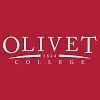
Olivet College was founded in 1844. The school serves approximately 1,040 students enrolled in 31 majors and 24 minors ranging from Accounting to Sports Psychology. The Arts & Humanities Department houses the Visual Arts Program, which offers a BA in Visual Arts with a Biological Illustration Concentration. Offered jointly with the Biology Program, the BA consists of 13 major core courses (Visual Arts), three concentration core courses, and six recommended elective courses.
The school says the focus of the program is the “specific application of visual/artistic skills towards biological/medical/scientific ends.” Students are trained to “draw realistically and accurately as well as to master a variety of commercial design skills involving the reproduction of graphic materials.” Course highlights include Anatomy and Physiology, Biological Illustration: Advanced and Intermediate, Biological Science, Comparative Vertebrate Biology, Drawing Skills Lab, Figure Drawing: Intermediate, Image and Culture, Introduction to Graphic Design, Introductory Zoology, Portrait Sculpture: Fundamental, Printmaking: Fundamental, and Visual Foundations.
Graduates of the program are prepared to enter graduate programs leading to a master’s degree in biological/medical/scientific illustration. “This highly specialized field of study” also leads to a “rewarding career combining art and biology.”
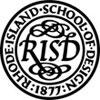
Founded in 1877, Rhode Island School of Design (RISD) is one of the first art and design schools in the U.S. Serving approximately 2,500 students from across the U.S. and 57 other countries, the school has 19 studio majors and leading to bachelor’s or master’s degrees in the Fine Arts, Architecture, Design or Art Education. The school’s most popular programs are Illustration, Painting, Graphic Design, Film/Animation/Video (FAV), Illustration, and Industrial Design.
The Continuing Education (CE) Division at RISD offers a Certificate in Natural Science Illustration that allows students to “explore various media and techniques including pencil, acrylic, watercolor, gouache and oil to discover their individual style; and composition and color strategies enable students to fully interpret, capture and portray subjects including birds, animals, botanicals, etc. in natural environments,” says the school.
The Certificate Program “utilizes RISD’s unique facilities including the Edna Lawrence Nature Lab as well as site/field visits to the Roger Williams Park Museum of Natural History, Zoo and Greenhouse.” Course highlights include Applied Color, Digital Design Techniques, Adobe Photoshop, Drawing from Nature, The Artful Bird: Ornithological Illustration, and The Artful Insect: Entomological Illustration.
Students will complete several “weekend technique intensives,” as well as Final Studio: Natural Science Illustration. Graduates of the program will leave the program with “portfolio-ready pieces of natural science subjects for the purpose of professional presentation and potential publication.”

Rochester Institute of Technology (RIT) traces its roots back to 1885. The school serves nearly 19,000 students at its main campus and international campuses in China, Croatia, Dubai, and Kosovo. Hundreds of programs are offered at the graduate, undergraduate and professional levels in nine colleges. The College of Art and Design offers a BFA in Medical Illustration.
The BFA in Medical Illustration combines drawing and science. Students in the program learn to translate “anatomical and surgical sketches into instructional illustrations to visually support the allied health and medical educational fields,” says the school. Program highlights include the opportunity to gain hands-on experience at area hospitals, learning experiences in the on-campus, state-of-the-art human anatomy laboratory, and access to digital technology and computers that allow students to create “sophisticated images along with well-designed, interactive educational media displays.”
Students can expect to take courses such as Computer Anatomic Illustration, Applications in Medical Illustration, 4D Design, Human Biology, Human Gross Anatomy, Illustrating Human Anatomy, Scientific Visualization, Surgical Illustration, 3D Animation Organic Forms, and 3D Modeling Organic Forms. Portfolio and Business Practices is also part of the program.
Graduates of the BFA in Medical Illustration go on to establish careers such as Forensics Illustrator, Information Graphics Illustrator, Medical Book/Texts Illustrator, Medical Illustrator, Medical Interactive/Interface Designer, Medical Model Designer, Medical Legal Illustrator/Litigation Support Specialist, Prosthesis Designer/Anaplastologist, 3D Computer Modeler/Animator, 2D Medical Animator, and many others.
Top employers for Medical Illustration BFA graduates include Anatomical Justice, Cell Press, Department of Neurobiology and Anatomy at University of Rochester Medical Center, Dragonfly Media Group, Legal Art Works, New England Journal of Medicine, Science Magazine, Smithsonian Institute, Visible Body/Argosy Medical Publishing, and many others.
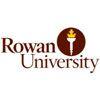
Founded in 1923 as a teacher preparation college, Rowan University serves more than 19,400 students enrolled in 83 bachelors, 41 master’s, two professional, and seven doctoral degree programs. Programs are offered through a dozen schools, including the College of Communication & Creative Arts, which houses the Department of Art. Here, students can earn a BFA in Biomedical Art and Visualization.
The program consists of 129 semester hours of study, including courses such as Biomedical Art: Digital Rendering Techniques, Biomedical Art: Introduction to Digital 3D Modeling, Biomedical Art: Storyboarding & Animation, Color & Design, Figure Anatomy for the Artist, Introduction to Game Media Design, Medical Sculpture & Forensic Reconstruction, and Surgical Illustration and Media. To create illustrations, students will use art media such as carbon dust, digital line & ink (Adobe Creative Cloud), graphite, interactive media (Adobe Creative Cloud, Unity and Unreal Game Engines), 3D modeling and animation (Autodesk Entertainment Suite), and 2D digital painting/illustration (Adobe Creative Cloud).
Through Rowan University’s connections with major area hospitals, organizations and academic institutions, students gain real world, hands-on experience in medical, natural, and educational media. In addition to Rowan’s own Cooper Medical School, students will engage in projects and with professionals at Mutter Museum, Franklin Science Center, Academy of Natural Sciences at Drexel University, University of Pennsylvania, and many others. Students also have access to more than 200 study abroad programs in 40 countries.
Graduates of the program work in career areas such as Government Agencies, Hospitals, Medical & Scientific Advertising/Educational Agencies, Medical Device & Biotechnology Media Markets/Design, Medical Legal and Forensics Firms, Museums & Cultural Institutions, Pharmaceutical Media Markets, Publishers, Serious Gaming & Interactive / Educational Media Design, Universities, and Veterinary Media Markets, to name a few.
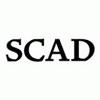
Savannah College of Art and Design (SCAD) was founded in 1978. With campuses in Savannah, Atlanta, Hong Kong, and Lacoste, France, the school serves more than 14,000 students from all 50 states and more than 100 countries. Offering more art degree programs and specializations than any other art and design university, SCAD has plenty of opportunities to study at domestic and international locations.
Offered through the School of Communication Arts, SCAD offers a Minor in Scientific Illustration. The school says “students in this minor learn a formal and codified form of communication that involves various media and a range of subject matter, from the telescopic to the microscopic, to visualize the amazing aspects of this and other worlds—past, present and future.” Courses for the program include Introduction to Scientific Illustration, Illustrative Anatomy and Perspective, Drawing for Sequential Art, Dynamic Visualization for Scientific Illustration, Environments, Props and Structures, Advanced Rendering Techniques for Scientific Illustration, Constructive Human Anatomy for Sequential Art, and Constructive Animal Anatomy for Creature Design
Other program highlights include on campus conferences consisting of Science and Nature Illustrators, the opportunity to exhibit student work, and participate in art competitions.
SCAD’s Minor in Scientific Illustration consists of 25 credit hours and is offered at the Savannah campus.

When University of Georgia (UGA) was incorporated on January 27, 1785, Georgia became the first state to charter a state-supported university. The school serves 38,920 students enrolled in 200+ majors and academic programs in 17 colleges and schools. In addition to the main campus in Athens, the school has campuses in Costa Rica, Cortona, Italy, Oxford, England, and Washington DC.
The Franklin College of Arts and Sciences houses the Lamar Dodd School of Art. Here, students can earn a BFA in Scientific Illustration. The program consists of coursework in six areas including Foundation, Sciences, Quantitative Reasoning, World Languages and Culture, Humanities and the Arts, Social Sciences, and Arts.
Course highlights for the program include Study in Scientific Illustration, Color and Composition, Color Techniques in Scientific Illustration, Computer Animation for Dramatic Media I, II & II, and Design in Scientific Illustration, Ideation and Methodologies, Illustration, Printmaking: Lithography, Techniques and Topics in Science Illustration, Thematic Inquiry in Contemporary Art & Design, and Visual Narrative Systems.
Students will work and learn in dedicated classroom space, facilities and studios. They will also have the opportunity to gain hands-on experience through internships and study abroad experiences. The school has more than 100 study abroad and exchange programs in 75 countries.

Virginia Commonwealth University (VCU) was established in 1838. The school serves more than 31,000 students enrolled in 225 academic programs across 13 schools and one college. An additional four programs are offered at VCU’s Qatar campus. The School of the Arts (VCUarts), which serves more than 3,000 students, offers 25 degree programs, including Illustration.
Administered by the Communication Arts Department, the VCUarts Illustration Program offers a Concentration in Scientific and Preparatory Medical Illustration, which requires 32 credits in the biological sciences and chemistry, in addition to communication major and illustration courses. Course highlights for the program include Business of Communication Arts, Concept Drawing, Drawing Studies: The Figure in Context, Scientific Illustration, Time Studio, and Visual Communications.
All Communication Arts students have the opportunity to complete an internship and/or study abroad.
